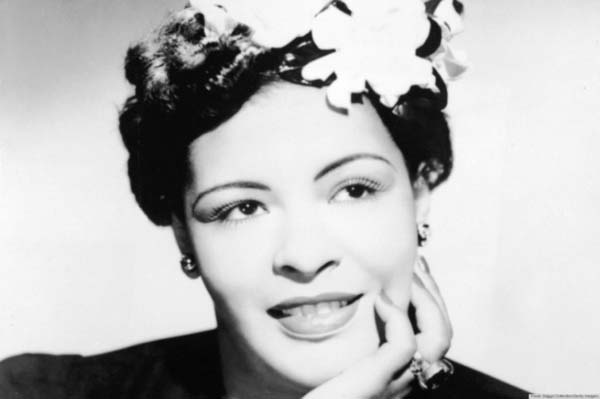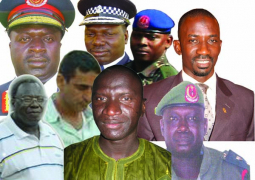
Back
in 2009 when we began writing this column under the caption “Jazz Extra” in
another newspaper, we indicated that we were inspired among other things by the
election of Barack Obama as the first African American President of the USA. We
also said at the time, that his election was the highlight and hallmark of the
culmination of contributions by African Americans to the rich history of the
United States. President Obama’s success is the result of the steady but at
times turbulent growth of American democracy, and one of the cultural
foundations of this democracy is Jazz.
Now
that we are at the twilight of President Obama’s term in office, it is
significant to mention that the growth of jazz is synonymous to the growth of
American democracy. Jazz became America’s most effective export in the early
1900s and played an important role for American diplomacy during the cold war.
It has been part of the White House for various Presidents, as Duke Ellington
performed there during the presidency of Richard Nixon, and Wynton Marsalis
also performed there with President Clinton playing saxophone.
President
Obama has told Rolling Stones Magazine that he keeps the music of John Coltrane
among others in his iPod, and President Bush once said that the story of jazz
mirrors the story of the American nation. Jazz musicians indeed played a key
role as cultural ambassadors during the cold war and still continue to promote
the values and virtues of the American experience.
It
is said that the essence of jazz is the same as that of democracy, because it
offers “the greatest amount of individual freedom consistent with a healthy
community”. Jazz is democracy in sound
through endless repetition, as each musician is allowed extraordinary liberty
during solo, and is then expected to conscientiously back up the other
musicians in turn. Jazz has been described as democracy in sonic motion, for in
it; one can see, hear and experience concepts that are fundamental to
democracy. In fact, as we earlier noted in another piece, the study of jazz is
now being used as a metaphor to teach the tenets of American democracy in
elementary schools. Hence, the story of jazz is now not only historical and
entertaining, it has also become pedagogical. Comparison of jazz to democracy
is now a project in the U.S.A., and it is gaining momentum.
Meanwhile,
let us return to our focus on women in jazz and continue with a portrait of one
of the most intriguing jazz personalities of her time. She was
born
Eleanora Fagan on April 7th 1915 in Philadelphia, Pennsylvania, USA. Her
occupation was that of jazz singer-song writer, with a vocal style that was
greatly influenced by jazz instrumentalists. She was more of a singer than a
songwriter, consequently, she co-wrote only a few songs during her career, but
a few of them became jazz standards. Billie Holiday had a difficult childhood
which followed her into adulthood until her death in 1959. Her mother’s name
was Sadie Fagan and her father was Clarence Holiday, a local musician. They
never married, nor lived together and when Eleanora was born, her mother
(Sadie) arranged for the child to stay with her half-sister who lived in
Baltimore. Eleanora suffered from the absence of her mother for most of her
early life and would get involved in truancy and other activities which
resulted in her being taken to juvenile court when she was not even ten years
old. By the age of eleven, Eleanora had dropped out of school, and was working
long hours at her mother’s restaurant.
In
1926 Eleanor was a victim of rape by a neighbor. The neighbor was arrested and
Eleanora was placed under protective custody. She was released in 1927 and
together with her mother; they began working for a madam. It was during this
period when she first heard of the music of Louis Armstrong and Bessie Smith.
In 1929, Eleanora took the pseudonym “Billie” from an actress she admired, and
Holiday from her father Clarence. She started performing at clubs and teamed up
with a tenor saxophone player called Kenneth Hollan. They stayed together from
1929 to 1931 working clubs in the New York area, and by the end of 1932 at the
age of seventeen, Billie was performing full time at a club called Covans on
West 132nd Street in Harlem. While working at Covans, a producer called John
Hammond heard Billie sing for the first time, and was so impressed, that he
arranged for her to make her recording debut with Benny Goodman in 1933. She
was only eighteen years old at the time, but succeeded in singing two songs
“Your mother’s son-in-law” and “Riffin the Scoth” which became her first major
hit selling 50,000 copies at that time.
In
1935, Billie returned to the studio with Goodman and a group led by pianist
Terry Wilson. She was signed to Brunswick Records by John Hammond and with
Wilson; she took traditional pop tunes such as “twenty-four hours a day” and
“Yankee Doodle never went to Town” and turned them into jazz classics. By now,
Billie was in her twenties; she also worked closely with saxophonist Lester
Young with whom there was special rapport. It was Young who called her “Lady
Day” while she referred to him as “Prez”. In 1937, Billie played at the Clark
Monroe Uptown House for three months and had brief stints as a big band
vocalist with Count Basie and Artie Shaw. This made her among the first black
women to work with a white orchestra which was a rarity at that time. In 1938,
she recorded a single “I’m gonna lock my heart” which became a hit and set the
stage for more success.
Billie’s
contract with Brunswick Records was short lived and she went on to do some
recordings with Columbia Records while continuing to play the club circuit. It
was during this period that she met Barney Josephson, proprietor of Café
Society which was an integrated night club in Greenwich Village, in downtown
New York City. Barney would later introduce Billie to a song called “Strange
Fruit” which was based on a poem written by Abel Meeropol, a Jewish School
Teacher from the Bronx. The poem was about lynching and described the hanging
of black bodies from trees as ‘Strange Fruits’. It was a controversial song,
and Billie was reluctant to play it, but she was eventually convinced by Barney
and she played it at the Café Society in 1939. The subject matter of the song
was too sensitive, and Columbia Records decided not to record it, so in 1939, a
producer called Milt Gabler agreed to record it on his Commodore label. The
song would remain in Billie’s repertoire for the rest of her career and her
popularity took a huge jump after the release of the record. In 1944, she
returned to the studio and recorded some of the songs she made with Terry
Wilson in the 30’s. She also recorded a version of the famous song ‘Embraceable
You’ which would later be inducted into the Grammy Hall of Fame in 2005.
Billie
was becoming relatively successful and would use some of the money earned while
touring with bands, to assist her mother in the restaurant business. One day,
Holiday needed money and went to the restaurant for some cash, her mother
refused and Billie stormed out of the restaurant hollering “God bless the child
that’s got his own”. With the help of a pianist called Arthur Herzog, the two
wrote a song based on the line “God Bless the Child”. The song was recorded and
it became her most popular record. In 1976, it was added to the Grammy Hall of
Fame. Still working with Gabler, Billie moved to Decca Records and recorded
another hit song “Lover Man”. While with Decca, she recorded three more songs:
“That Ole Devil called Love”, “Big Stuff” and “Don’t Explain”, a song she wrote
after seeing lipstick on her husband’s shirt collar. In 1946, she recorded
“Good Morning Headache” one of her most critically acclaimed songs and also
co-starred with Louis Armstrong in the film ‘New Orleans’. This experience was
not a happy one and Billie was not pleased of the role she was asked to
play.However, she recorded some of the songs for the soundtrack and made a
surprise appearance at Louis Armstrong’s Carnegie Hall concert which was
intended to promote the film.
Holiday
was addicted to drugs and this was becoming a growing problem for her work. In
1947, she was arrested for possession of narcotics in her New York apartment.
She was tried, convicted and sent to jail. In 1948, she was released for good
behavior and soon after her release; she performed a comeback concert at
Carnegie Hall which was sold out before the show. Later that year, she would
appear in the Broadway production; “Holiday on Broadway”. In that same year,
Billie recorded Gershwin’s “I love you Porgy”which was very popular at the
time. The song was heard by upcoming Nina Simone who recorded it later in 1958
and it became Nina’s only top 40 hit in America. In 1950, Holiday appeared in a
short film with Count Basie and his sextet, and sang “God Bless the Child “on
the set. By now, her drug abuse and drinking coupled with abusive relationships
with men was causing her health to deteriorate. In 1957, she married Louis
McKay (a mafia enforcer), who in spite of being abusive as the previous men in
her life, did try to get her off drugs. Her autobiography “Lady Sings the
Blues” was written and published the previous year and she released an album
with the same title to accompany the book. During this period, she also toured
Europe with a band as part of a Leonard Feather package. Her last recording was
done in 1959 with MGM Records which was released under the title, “Last
Recordings”.
In
the same year, Holiday was taken to Metropolitan hospital in New York suffering
from liver and heart disease. While being taken to the hospital, she was again
arrested for drug possession as she lay dying on her hospital bed. She died on
July 17th 1959, dead broke with 70 cents in the bank and 750 dollars wrapped in
50 dollar bills hidden on her body.
Billie
Holiday’s life was one of extreme circumstances that were full of intrigue and
tough challenges.




